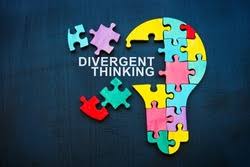Building Knowledge and Social Interactions through Reading
Navigating Special Education classrooms can take a toll on students with dyslexia whose learning styles and cultural experiences may not always be appreciated or honored by their teachers. A majority of the time, the reading curriculum does not match the student’s learning needs or cultural reality, and is limited in scope related to teaching the sound structure of American English Language (i.e., Science of Reading) through a structured literacy approach. At both the learning to read and reading to learn stages, students need instruction in reading that is not only explicit, direct, and systematic, but also framed through both constructivism (how we learn) and a social cultural perspectives, which considers the ‘what’ of reading (text, content, etc.), the ‘how’ of reading (multisensory approaches), and the ‘who’ of reading (the student, their experiences & environment).
Both the constructivism and social cultural lenses emphasize the importance of context-based learning through making meaning of new content or concepts, becoming active participants in the reading process, and visualizing a mental representation of the text, which all occur through the interactions with others. Within the context of decoding, students are creating a mental depiction of how words are formed through phonemes-graphemes (auditory), syllabication (syllable division patterns) and written practice (kinesthetic). Putting these decoding skills together through visualization of word construction (spelling) can lead to comprehension, giving meaning to the process of reading.
We know that reading is a social practice, which affects when and where students read, who they read with, the purpose behind why they are reading, and how they read.
However, with the current literacy and inequality gaps in the American educational system, Special Education teachers should keep some fundamental questions at the forefront of their activity planning: “What is it I want my students with dyslexia to be able to do in terms of social practice? What can students learn about their social world through reading text? What skills or strategies can be learned through their social practice?
Copyright 2020 Sponsored Images iStock
However, with the current literacy and inequality gaps in the American educational system, Special Education teachers should keep some fundamental questions at the forefront of their activity planning: “What is it I want my students with dyslexia to be able to do in terms of social practice? What can students learn about their social world through reading text? What skills or strategies can be learned through their social practice?
Special Education teachers can group students together and encourage them to become active participants in a classroom reading activity through dialogue or teaching a lesson plan themselves. Teachers could have students examine the text and then reflect on the understanding of phonemes-graphemes, syllabication, and definition of the word. After students engage in a dialogue about the text, they could share their insights with others in small or large groups, which would reveal different perspectives. This encourages deeper questioning about the meaning of words and helps students move from word level understanding (vocabulary), to comprehension based on semantics (sentence level), and finally to comprehension of the whole text (reading for meaning).
Educational reform is needed in: (a) teacher training, (b) how we think about instruction and learning outcomes within the contexts of both general and Special Education, and (c) how students with dyslexia are taught to read. Otherwise, we will lose yet another generation of exceptional learners.
Shawn Anthony Robinson, PhD




Comments
Post a Comment